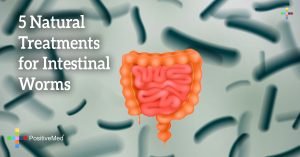
Look What a Doctor Took Out of Her Chest – Shocking!
[nextpage title=”…”]
Most people who have a cardiac pacemaker implanted never expect to view it. In a rare rejection, Gemma Bosanko not only viewed the metal device, but was shocked to see a gaping hole in her chest surrounded by inflamed tissue. The pacemaker was working its way out through the flesh, much like an infected splinter.
Bosanko, of Millom, Cumbria, was 29 years old and suffered from multiple cardiac seizures. A pacemaker was implanted to check these, and finally a heart monitor. The monitor was about the size of a pack of chewing gum. Three weeks after the implant, the device ate its way through the tissues surrounding it in a bizarre medical malfunction.

Although cardiovascular implantable electronic devices (CIEDs) such as pacemakers save lives, they can be deadly through infection. More and more patients – some as young as Bosenko – are receiving the devices, and the rate of infection is rising. Bosenko is unusual in that infection more often occurs in older, sicker patients with medical conditions that make the infections more deadly. The number of CIEDs implanted has doubled since 1993, but the number of associated infections has tripled, according to The Journal of the American College of Cardiology.
There are two types of infection that may follow the implantation of a CIED. One of these is an immediate infection, which Bosenko appears to have contracted. “This type of infection usually presents early on and is called a pocket infection,” says Arnold J. Greenspon, MD., author and professor of medicine at Thomas Jefferson University Hospital in Philadelphia. This kind of infection requires prompt removal of the device, although Bosenko’s body did that for her. Prompt removal does not mean the patient is out of the woods, even as the infection is treated. Patients have the devices implanted for cardiac disease that is life-threatening on its own. A stay in the ICU is indicated.
RELATED ARTICLE: THIS May Save Your Life: The Difference Between A Heart Attack, Stroke And Cardiac Arrest
A less obvious form of CIED infection can occur long after the device is implanted, sometimes two years later. It may be hard to identify the source of the infection, unlike the bizarre rejection that Bosenko experienced.
The second form of infection may present as a systemic illness like atypical pneumonia. Doctors must always be aware that the leads, or wires, connecting the pacemaker to the heart may be infected and check the device first. The more time that elapses the worse the prognosis, as cardiac patients can be quickly overwhelmed.

[/nextpage] [nextpage title=”…”]
Although Bosenko’s body forced most of the CIED from her body, device removal is sometimes risky, too. Surgeons must make the decision to leave the device implanted and attempt to clear the infection, or remove it and risk a cardiac event. Most surgeons concur with removing the device and clearing the infection.
Hardware removal is preferable to antibiotics, reports Dr. Gregory Crooke, a cardiac surgeon at Maimonides Medical center in New York City.
“Removal of the infected device is simpler than open heart surgery, which is what will be needed if the infection spreads to the valve,” he said.
The long stay in the hospital for such an event is risky, also. The longer the stay, states Dr. Ranjit Suri of Lenox Hill Hospital in New York City, the greater the possibility of hospital-related infection.
Bosenko’s survival is astonishing, as she did not even realize the enormity of her situation.
“I noticed my skin was thin and a bit wet,’ she said. ‘I put a plaster on it and when I got to work I checked and there was a little hole in my chest.”
Considering the grave risk of infected pacemaker devices, Bosenko’s story could be attributed to youth – or a great deal of luck.
[/nextpage]





